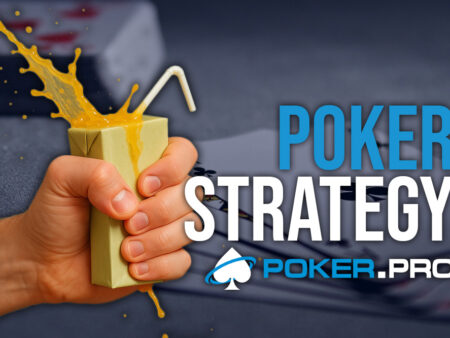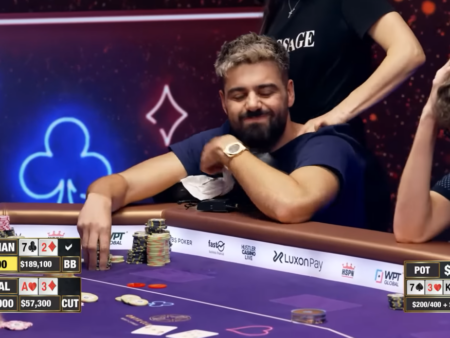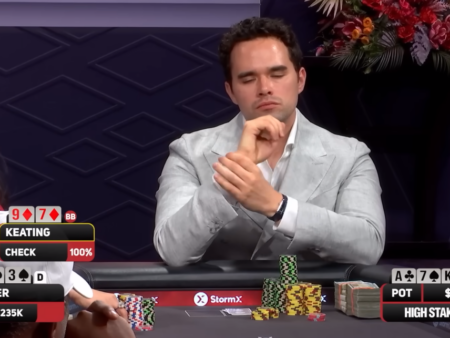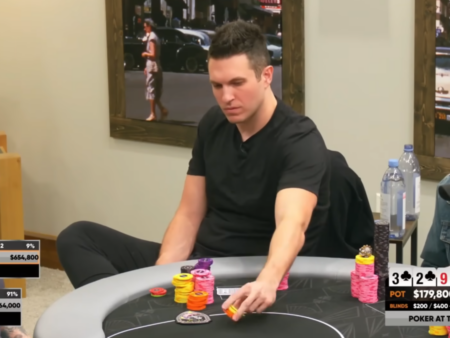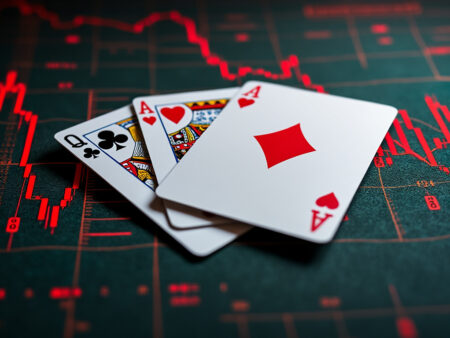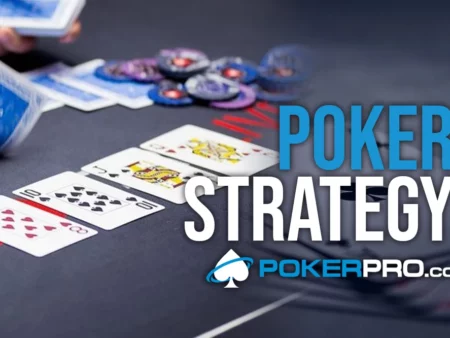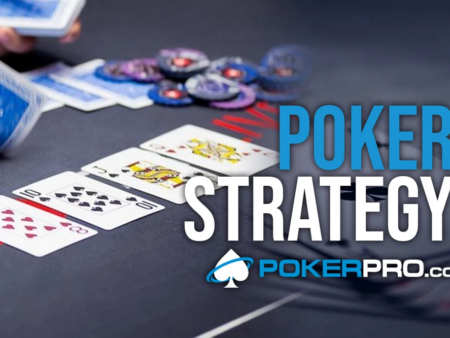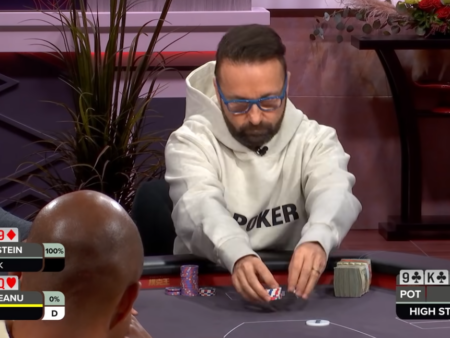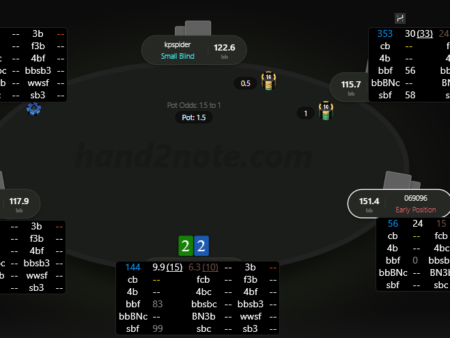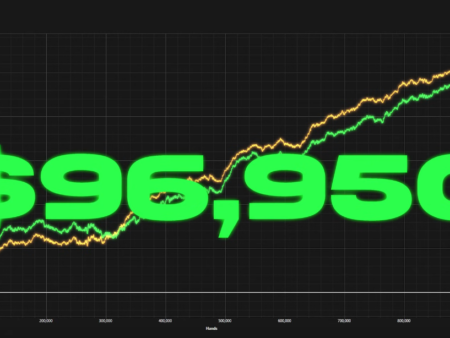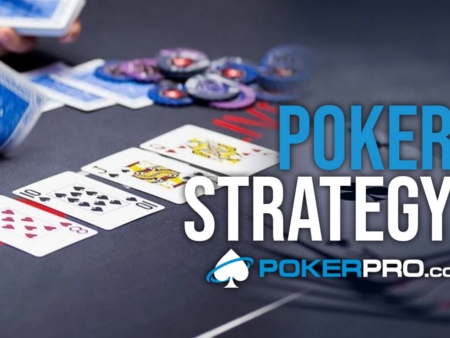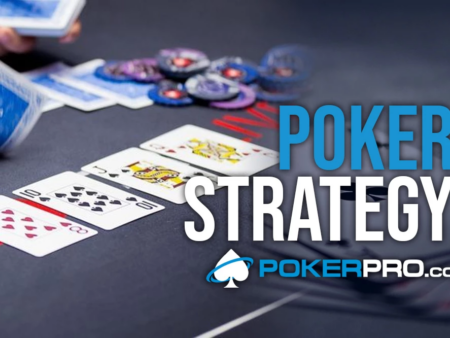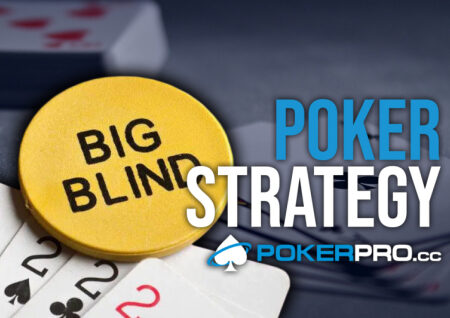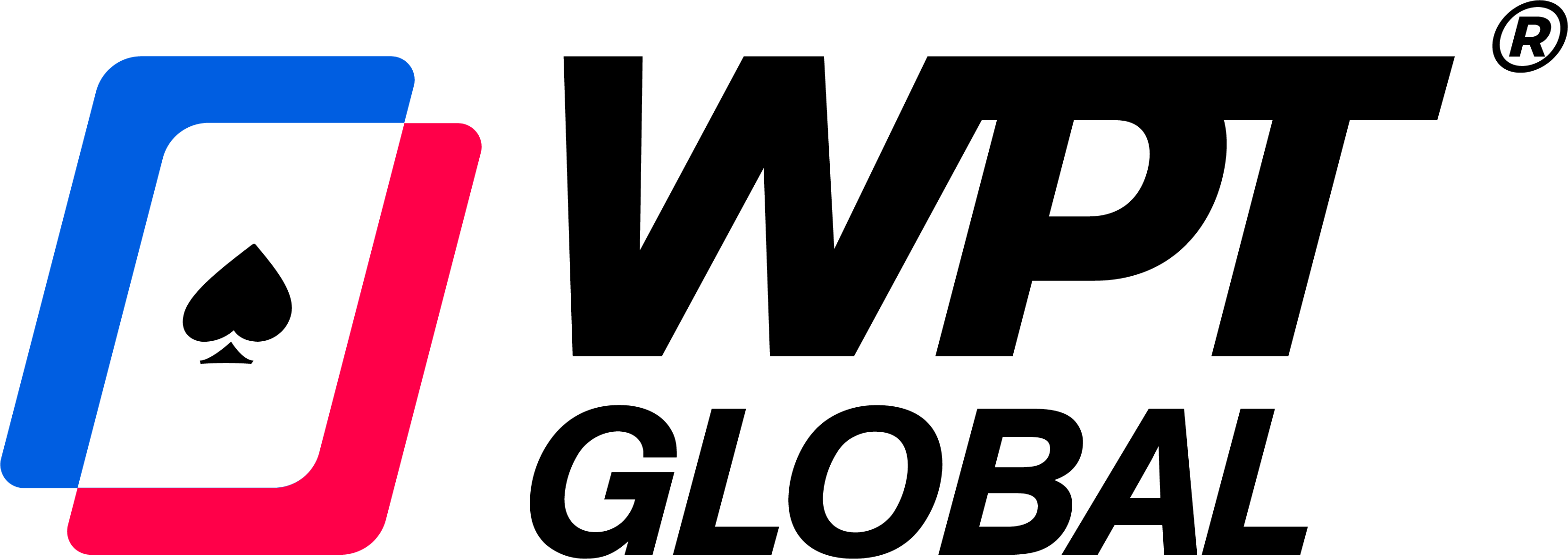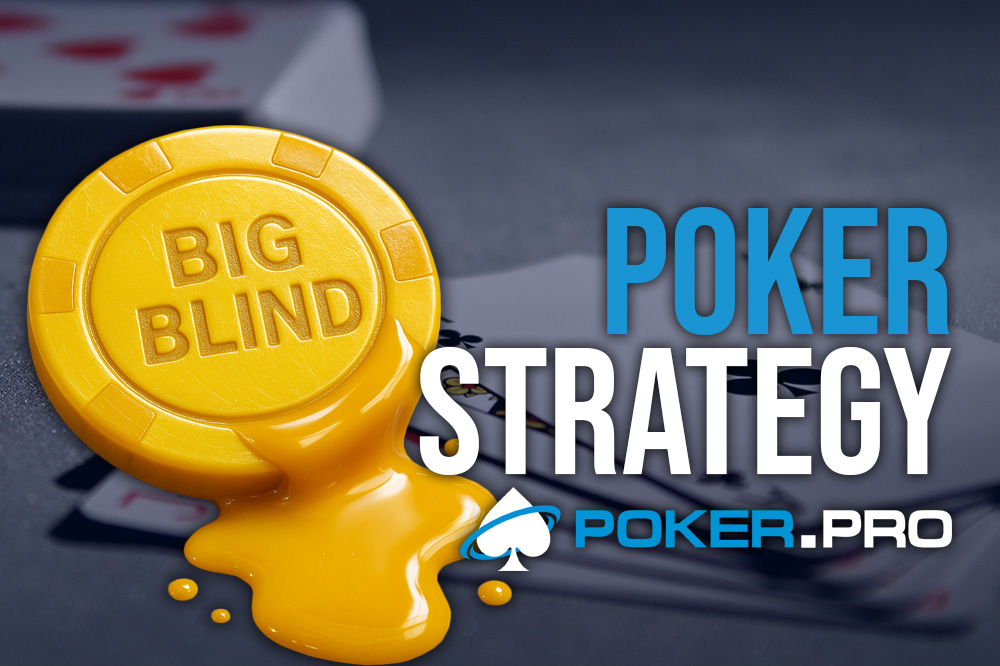
The big blind position in 6-max No Limit Holdem is the most crucial position and also where we will play most hands. The key to winning poker is to reduce the loss we have from the big blind, and if we manage to make just small tweaks, it can make a day-and-night difference in our win rate.
In the big blind, we are forced to put money every time we are in that position, so if we would fold every hand, our win rate from the big blind would be -100bb/100h. The key is not to win from the big blind position, as that would be very optimistic, but to reduce losses; so, for example, if we are losing -50bb/100h and we manage to reduce it to -45bb/100 our overall win rate has increased by 5bb/100h which would be the magnificent result (if we consider that overall win-rates at high rake environments are 1-2bbs/100h).
Let’s take a closer look at how you can plug some of the most common leaks from the big blind and start saving serious money.
Not Floating Enough in Big Blind
If we are in the big blind and we call against open from the button, we can expect that he will have a wide range and miss many boards. For example, if we use the A♠7♥2♦ board, we check in BB and BTN C-bets for 33 percent. We need to float decent amounts of our king-high cards, especially the ones with backdoors.
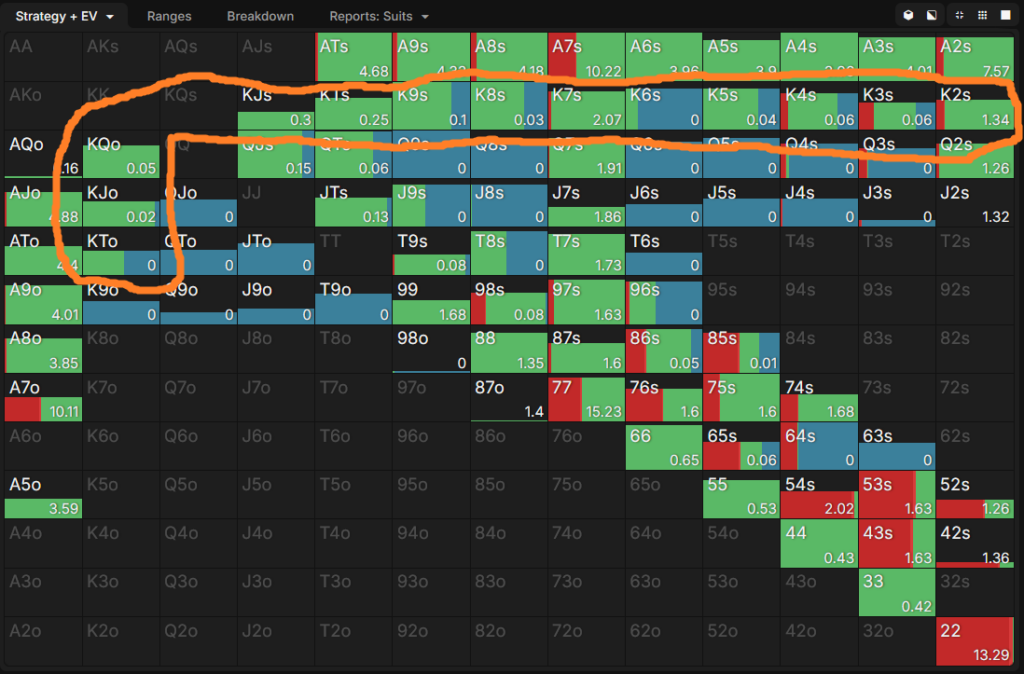
If you are not floating all of these hands, you are most likely leaking money in the big blind (besides king-high hands, there are also two strongest queen-high hands with backdoors that are calling as well). One of the main reasons why we need to float the flop with these hands is that we are not paying just to see one extra card; more often than not, we will see two extra cards, as our opponent will often check after we call the flop.
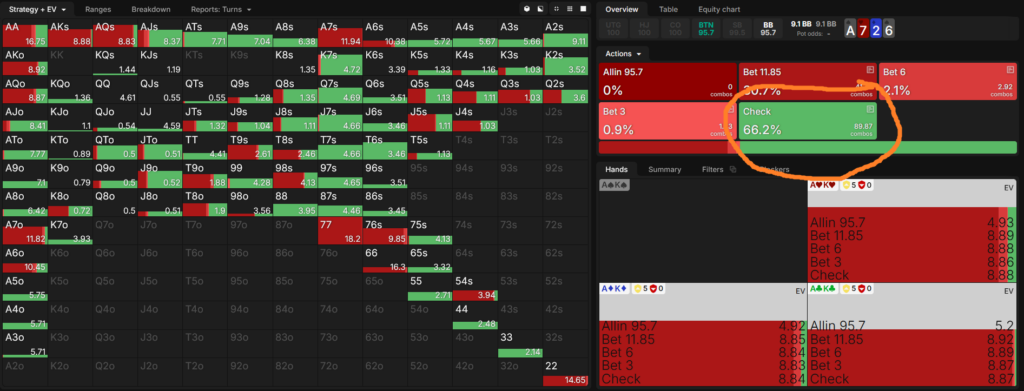
Here, we can see that in the solver on 6♠ runout, BTN is actually checking 66 percent of the time, which means we, as BB, are going to see another free card. We can also see that BTN is going to have plenty of “trash” hands that we have enough equity against, and we will often win against on river.
When the board starts to get more connected (we will have more backdoor hands but fewer high-card floats) or with higher cards, we want to get tighter and call less wide.
Calling Too Wide vs UTG
Against opens from an early position, we want to call much tighter than from BTN since our opponent is going to have a much stronger range in general. This could put us in a spot where we have a top pair, but a stronger kicker dominates us, and we end up paying more streets than we should. We need to be especially careful and tight on boards with multiple high cards (A, K, Q, J, T) and when we are faced with larger bet sizing.
So if we defend against UTG open from BB and the board comes A♣10♦2♥, we will be forced to fold all of our pocket pairs from 33 to JJ (excluding TT). Also, our middle pair Tx hands will have less equity when we are calling compared to if we would call vs BTN C-bet.
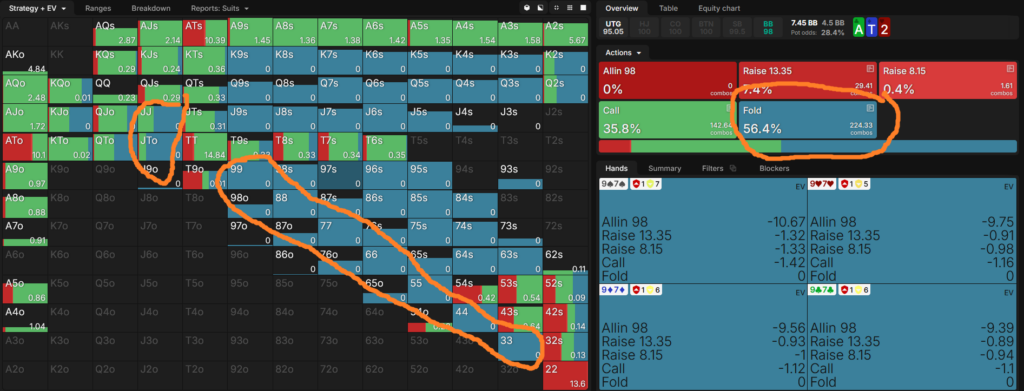
We can see here that BB has to fold quite a lot against 66% sizing (the most used sizing) from UTG, including pocket jacks, as there are not many good turns for pocket jacks, and they can’t realize the equity often enough.
- Read more: Bluff Catching On Overbluffed Lines
Not Check-Raising Enough Backdoors
We will need enough bluffs on the flop to avoid being exploited. If we only check-raise our strong hands and direct draws, our range will become too strong and linear, and an in-position player can exploit us.
Our goal is to have a specific amount of value to bluff hands on the river, one bluff for every two value bets we have. To achieve that, we will need to start having more bluffs on the flop(1:2), so we need to include some of our backdoors. We will lose one part of our bluffs on the turn (1:1), and then, in theory, if we are playing correctly, we should end up with a 2:1 ratio on the river.
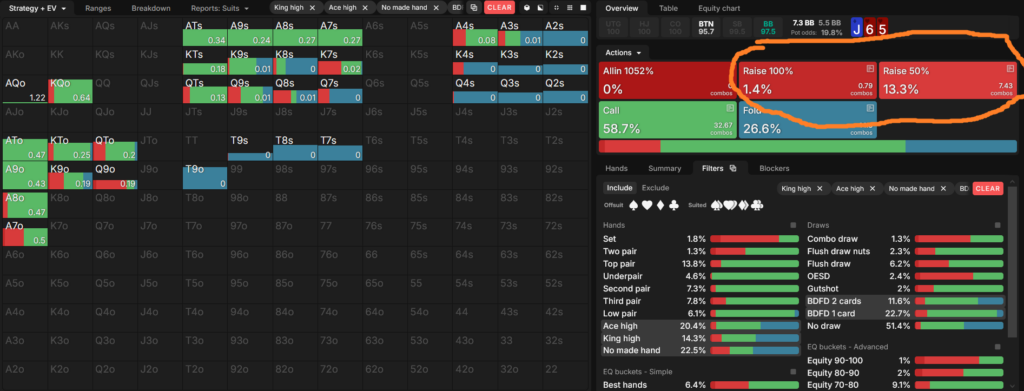
We can see on J♦6♥5♥ board that the solver is raising many of our backdoors, like ace seven with the ace of hearts and queen nine with the queen of hearts.
If you want to study and break down your hands with the best tool in the market, you can use our link and get a 10 percent discount on GTO Wizard!

